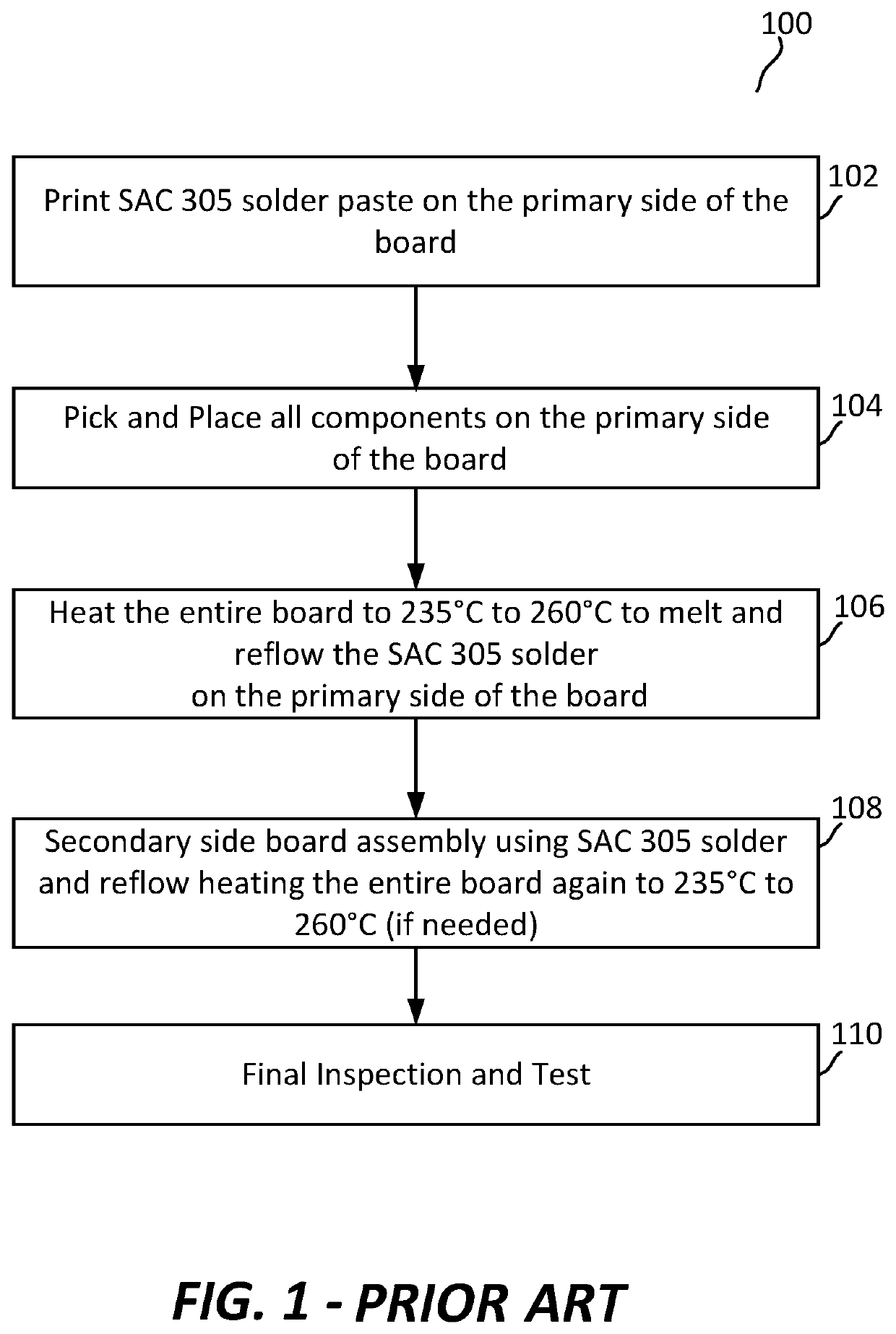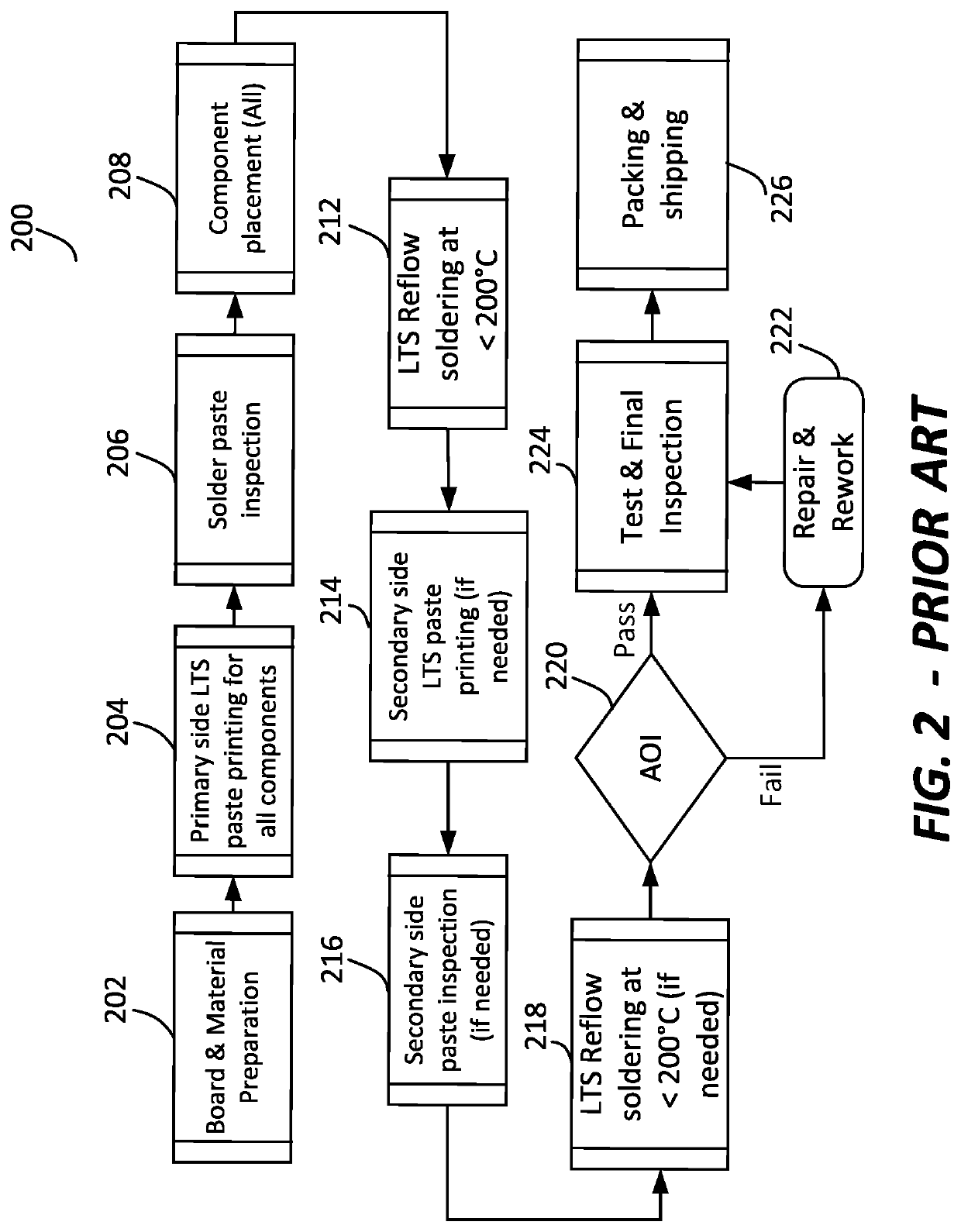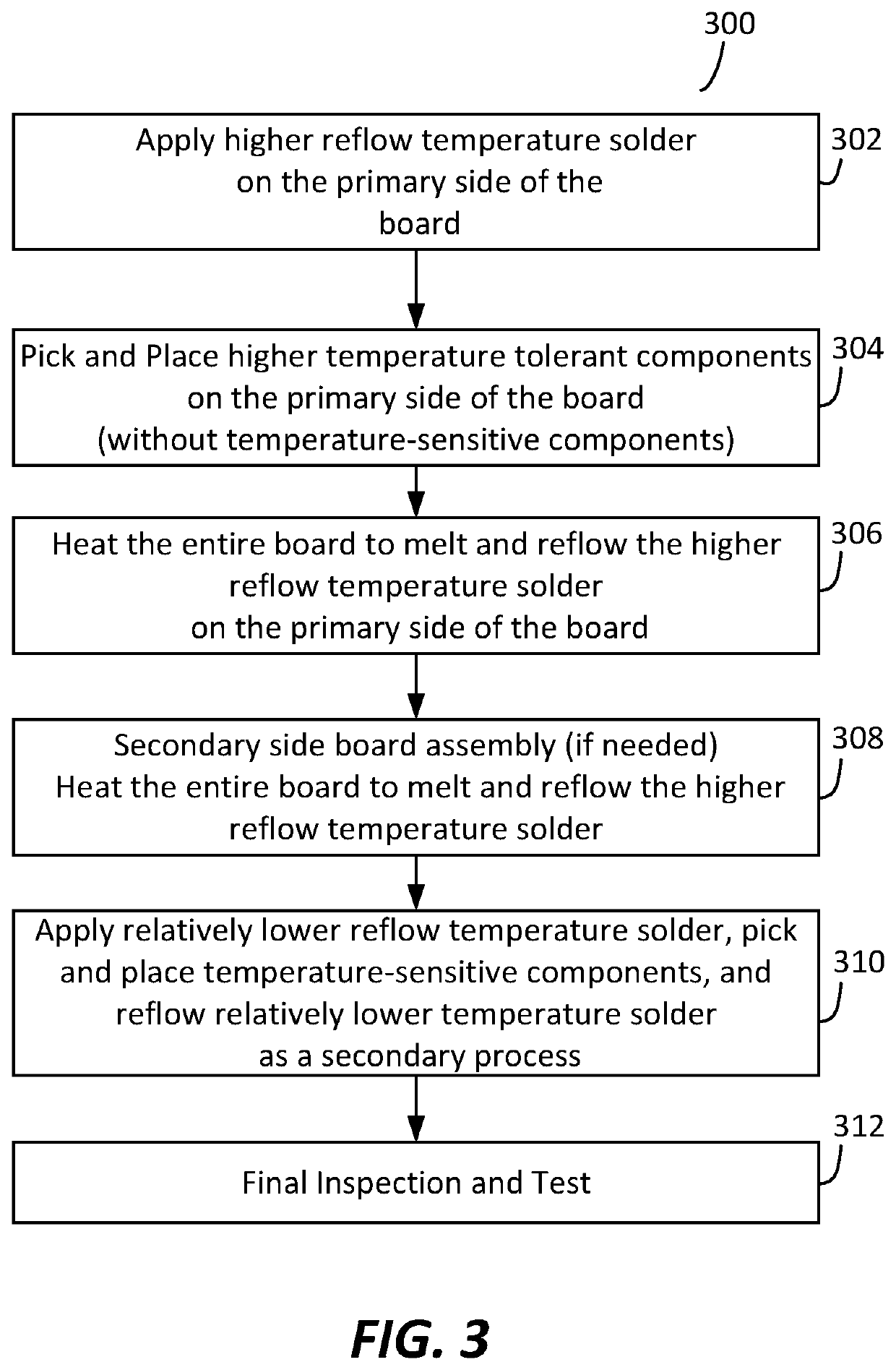Printed Circuit Board Assembly Process Using Multiple Solders And Assembled Boards Made Using The Same
a printed circuit board and assembly process technology, applied in the field of electronic boards, can solve problems such as temperature-sensitive damage to components, achieve the effects of reducing the process step of solder reflow, reducing the cost of assembly, and ensuring the quality of assembly
- Summary
- Abstract
- Description
- Claims
- Application Information
AI Technical Summary
Benefits of technology
Problems solved by technology
Method used
Image
Examples
Embodiment Construction
[0041]FIG. 3 illustrates one embodiment of a multiple step board assembly process flow 300 that may be implemented using a first relatively higher reflow temperature solder reflow process step to assemble higher temperature-tolerant electronic components to a PCB with relatively higher minimum reflow temperature (i.e., melting point temperature) solder (e.g., such as SAC 305), followed by a second relatively lower reflow temperature solder reflow process step to assemble one or more temperature-sensitive electronic components (e.g., such as a CPU BGA package or other type of electronic component package having temperature sensitivity) to the same PCB with a relatively lower minimum reflow temperature (i.e., melting point temperature) solder (e.g., LTS solder). Examples of CPU BGA packages include, but are not limited to, CPU BGA packages available from manufacturers such as Intel, Advanced Micro Devices (AMD), etc. Other types of electronic components may be BGA packages, packages h...
PUM
| Property | Measurement | Unit |
|---|---|---|
| Temperature | aaaaa | aaaaa |
| Temperature | aaaaa | aaaaa |
| Temperature | aaaaa | aaaaa |
Abstract
Description
Claims
Application Information
 Login to View More
Login to View More - R&D
- Intellectual Property
- Life Sciences
- Materials
- Tech Scout
- Unparalleled Data Quality
- Higher Quality Content
- 60% Fewer Hallucinations
Browse by: Latest US Patents, China's latest patents, Technical Efficacy Thesaurus, Application Domain, Technology Topic, Popular Technical Reports.
© 2025 PatSnap. All rights reserved.Legal|Privacy policy|Modern Slavery Act Transparency Statement|Sitemap|About US| Contact US: help@patsnap.com



